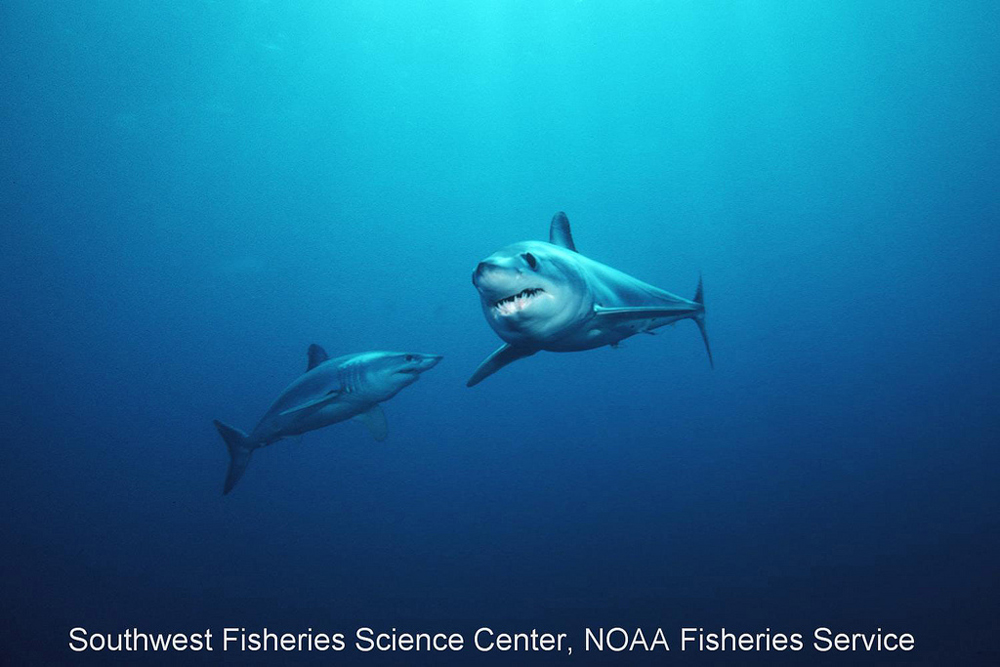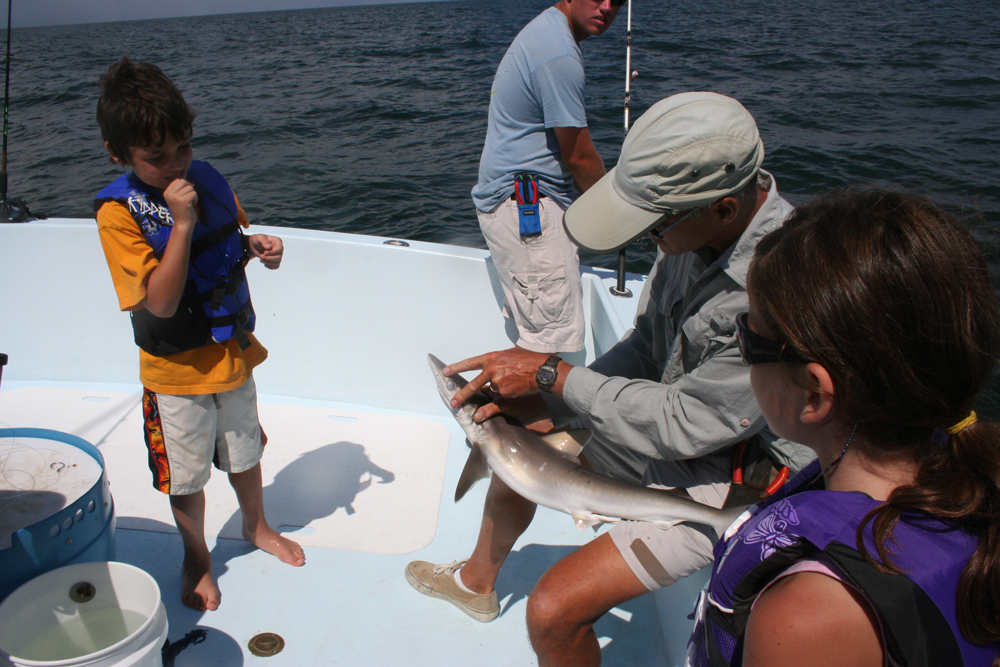What explodes out of the water like a ton of TNT, bites down with an estimated 18-tons of pressure per square inch, and eats 20-pound bluefish for a snack? Mako shark—and if you want to take on one of these beasts mano-a-mano, running from the Ocean City or Indian River Inlets puts them within close reach.

The 20 Fathom Fingers, just a hair over 20 miles from Ocean City and 30 miles from Indian River, is an excellent place for late spring/early summer sharking. If history proves any indicator, shark will be on the feed here right now. (Read our Coastal Mid-Atlantic Fishing Report, to learn the latest). You can expect mako to be on the menu so long as the water temperatures are near or above 60-degrees and bluefish—one of these shark’s favorite foods—are in the area. Most seasons, that means mako are concentrated here through June until mid July, when bluefish numbers in this area often thin out. Beyond this point they’re still a possibility, but are more scattered and harder to target. You’ll also encounter threshers at the 20 Fathom Fingers during this time frame (check out a 437-pound thresher shark caught our of Ocean City last summer), and this is another species that’s good on the table and is thus considered a prize catch. Blue shark, tigers, duskies, and a number of other species can also show up in your chum slick, but since these aren’t good to eat, should be released with care.
Getting to the 20 Fathom Fingers is easy: from Indian River run a 152-degree compass course to the area around 38’10.00 x 74’40.00, and from Ocean City, run a 123 degree course to the same location. The bottom slopes from the upper 80’s and lower 90’s to the 120’s and 130’s, then back up again, and down again, forming the “fingers” of deeper trench-like areas that create unique currents and attract fish. Glimpse at a chart of the area, and you should clearly make out these features. You’ll want to either drift across the fingers, or anchor on one of the sharp edges. In either case, make sure you allow a mile of distance, between yourself and other sharkers. There’s plenty of good bottom around here, and no reason to crowd one another out.
Whether you decide to drift or anchor, you’ll want to determine the direction of the current before setting up. This is a critical component to sharking, according to shark specialist Capt. Mark Sampson, of the Fish Finder, a full-time sharker with over 30 years of experience and author of the book, Modern Sharking.

“Anglers should always consider three things,” he says. “Number one, where the sharks should be in relation to bottom contours; number two, which direction the current will take the chum; and number three, where the boat must be so that the chum will flow across the area where the sharks should be holding.” Sampson also feels that many anglers don’t pay enough attention to how their chum line is disbursed in relation to the direction of the boat’s drift.
“To better understand where a chumline goes as it leaves their boat, anglers must first consider a few basics about ocean currents,” he said. “Despite how it may appear from the deck of a boat, currents do not necessarily follow the wind. A sustained wind may push the first couple feet of the ocean's surface in the direction the wind is heading, but below that depth the true current might be heading in an entirely different direction, and this is the current that will dictate where the chum will ultimately go. Anglers should also know that, depending upon where they are fishing, currents may or may not be directly affected by tidal flows. So, if a current is not flowing in a direction favorable to their fishing efforts, there's no guarantee it'll change directions within the next six hours. To figure out how that chum line will be moving, mark the boat’s position on a chart, draw an arrow through it that represents the direction of the wind (and therefore the boat), then draw three or four perpendicular lines from the wind line out in the direction the current is heading. These lines will indicate which way the chum is actually heading as it leaves the boat, and from which direction the sharks will be coming from. By plotting the boat and the chum’s travel paths in this fashion, anglers should be able to properly choose starting points for their drift.”
Sign up here to get the weekly FishTalk Chesapeake Bay and Mid-Atlantic fishing reports in your email inbox, every Friday by noon.